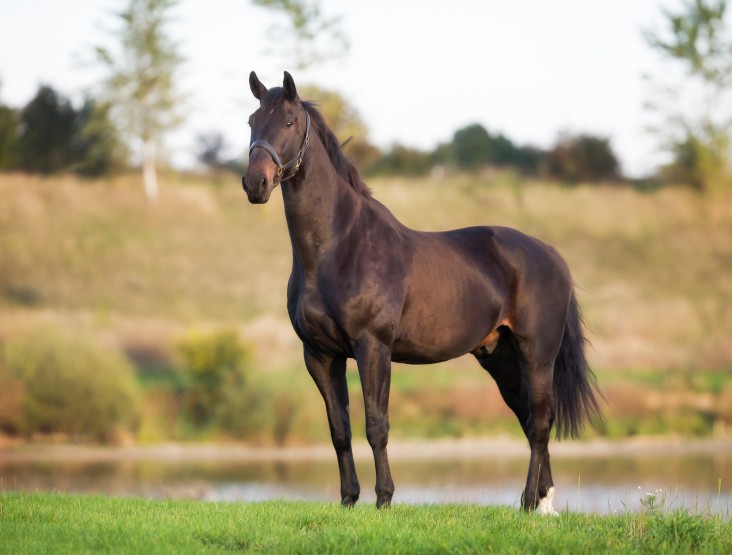
Knowing how to administer an intramuscular injection can really come in handy if your horse needs a series of shots, such as antibiotics. It will also save you money by reducing vet calls, and it's easier than you may think. Ask your vet to show you how the first time, and review these tips until you are adept at it.
Prepare the horse by clipping the horse's coat if the hair is very long, washing the area thoroughly if the coat is dirty, and using alcohol on a cotton ball to remove any dirt or bacteria at the exact injection site. Prepare the syringe by making certain it is sterile, knowing the exact dosage to give, and filling it carefully. It is best to pull the plunger back a little to take in a little air, then press the needle into the bottle, turn the bottle upside down, inject the air into the bottle by pressing the plunger completely in, then slowly withdraw the plunger to the desired dosage marking. Withdraw the needle from the bottle and inspect your filled syringe. If any air bubbles are visible, tip the syringe so it points straight up and squeeze until a tiny amount of the vaccine comes out.
Always have another person help you hold the horse, standing on the same side of the horse as you are, with a firm hold on the halter. If the horse moves, the handler should pull his head towards you so that his feet and body must move away from you. Always stand at the horse's side when working, keeping out of reach of his hooves. Though a shot administered well will sting no more than a bad fly bite, some horses will flinch, jump, kick, strike, or attempt to reach around and bite, so be prepared to move out of harm's way.
Know where the injection should be placed before you begin. These photos show the most common sites for shots, since they are highly-used muscles and less likely to abscess: the neck, hindquarter, and chest muscles.
Have your vet show you exactly the best spots on your own horse, but these photos will give you an idea. Injections should be rotated to different sites, never administering more than 10 mL per site. You can also switch to the horse's other side, to prevent him from getting stiff, sore, or afraid to accept the injection.
And finally, when it comes to giving the shot, don't be slow or hesitant. A firm tap once or twice with just the side of your hand against the horse will give your hand the correct motion, and on the third tap, thrust the needle straight in. If it is easier for you to put the needle in first and then attach the syringe, do so, as long as you have a syringe that slides in to the needle rather than screws in.
We hope you will find these tips useful. We are not suggesting in any way that you should discontinue a vet's professional care for your horse. This advice is intended to help you in the event that your vet suggests you give your own series of shots, saving time and money.
 Picking The Right Pet For You - How Much Care Do Different Animals Need?
Picking The Right
Picking The Right Pet For You - How Much Care Do Different Animals Need?
Picking The Right
 Omega 3 Supplements Can Benefit Horses With Lower Respiratory Diseases
Omega 3 Supplemen
Omega 3 Supplements Can Benefit Horses With Lower Respiratory Diseases
Omega 3 Supplemen
 What Your Dog’s Urine Can Tell You About Their Health!
What Your Dog’s U
What Your Dog’s Urine Can Tell You About Their Health!
What Your Dog’s U
 The Importance Of Companionship And Quality Time For Dogs
The Importance Of
The Importance Of Companionship And Quality Time For Dogs
The Importance Of
 Benefits Of Big Bags Of Salmon Meal For Your Dog
Benefits Of Big Bags Of Salmon Meal For Your Dog
Benefits Of Big Bags Of Salmon Meal For Your Dog
Benefits Of Big Bags Of Salmon Meal For Your Dog
Copyright © 2005-2016 Pet Information All Rights Reserved
Contact us: www162date@outlook.com